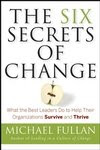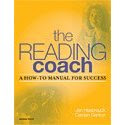Monday, April 6, 2009
Directions for Auto Summarizing Tool
Here are the directions to put the Auto Summary Tool on your computer.
In the 2007 version
Click on the drop down on your quick access tool bar at the top left. Click on More Commands. Then a box opens, at the top of that page click on the drop down and go to All Commands. Then scroll down and find Auto Summary Tool. Highlight it and then click ADD. Finally click OK at the bottom (do not click reset). This will add your Auto Summary tool to the quick access toolbar at the top of all your word documents. Then you can highlight what you want to summarize, and pick which one you want: highlight main points, abstract, new document, etc.
In the 1999-2003 version
Auto Summary Tool is under the tools menu. Click on this drop down. Then click on the arrow at the bottom and the whole menu opens. Auto Summary tool is at the bottom of this menu.
Thanks for Margaret Ruppert for sharing this information with all of us!
Hope you find this helpful!
Amy
Friday, April 3, 2009
Sunday, March 29, 2009
Illiterate Adults
DO SOMETHING DIFFERENT TO KEEP YOUR STUDENTS FROM BECOMING ANOTHER STATISTIC! PLEASE!
The Mindset of Effective Educators
http://www.drrobertbrooks.com/
Sometimes, we have no control over things that happen!
Oral Reading Fluency
http://www.fcrr.org/ (Florida Center for Reading Research)

http://www.michaelfullan.ca/index.htm
http://www.michaelfullan.ca/resource_assets/handouts/08_Nov_Keynote_A4.pdf
How to Improve Reading Achievement
Other web resources for Tim Shanahan:
http://www.shanahanonliteracy.com/
Whole Faculty Study Groups-PLCs

Dr. Kelvin Adams says: "Do something brave for kids!"
The implementation of “Whole Faculty Study Groups”. This particular session focused on how a high school principal, now Superintendent of St. Louis Public Schools, Kelvin Adams, implemented Whole Faculty Study Groups for the direct benefit of the students. He gave a powerful web resource that could be of reference when implementing a professional learning community http://www.murphyswfsg.org/ . Most importantly though, he shared that there must be support from the building leadership as well as support for building capacity of teachers to provide effective teaching and learning. I found this session to be particularly engaging as I am going through doing “Critical Friends Group” in my role as a School Literacy Coach. I am thinking about how to implement this aspect of professional development as I plan for the next school year.
Additional web resources on Whole Faculty Study Groups:
http://www.middleweb.com/MWLresources/WFSgroups.html
http://www.ncrel.org/sdrs/areas/issues/methods/technlgy/te10lk44.htm
http://www.nde.state.ne.us/wfsg/index.htm
http://www.nsrfharmony.org/faq.html
Literacy Coaching

One common theme during the conference was the implementation of having coached teachers. Coaching is a current trend that shows merit in the school improvement process. Factors for implication on student achievement in a coached situation depend greatly on whether school-leaders value the importance of what a coach can do for professional development of educators, how effectively a coach is able to spend time with teachers, and whether the intended professional development by a coach becomes a sustainable habit. Presenters shared studies where coaches were change agents in professional development as well as student achievement (Sharon Ramey and Patricia Mathes).
Another presenter on the topic of coaching was Jan Hasbrouck. She shared information about various models of coaching and her book, The Reading Coach, A How to Manual for Success. She discusses how her model of coaching is “student focused coaching” which is defined as “a cooperative and ideally collaborative relationship with parties mutually engaged in efforts to provide better services for students. She sites great importance in partnership training where building level coaches receive training with the building principal in attendance at the same training. This is key in coaching implementation. During the presentation, she shared evidence-based research on the topic of coaching and found common themes during the research phase for her book. More about her book and sample training manual can be accessed at:
http://store.cambiumlearning.com/ProductPage.aspx?parentId=019005248&functionID=009000008&site=sw

